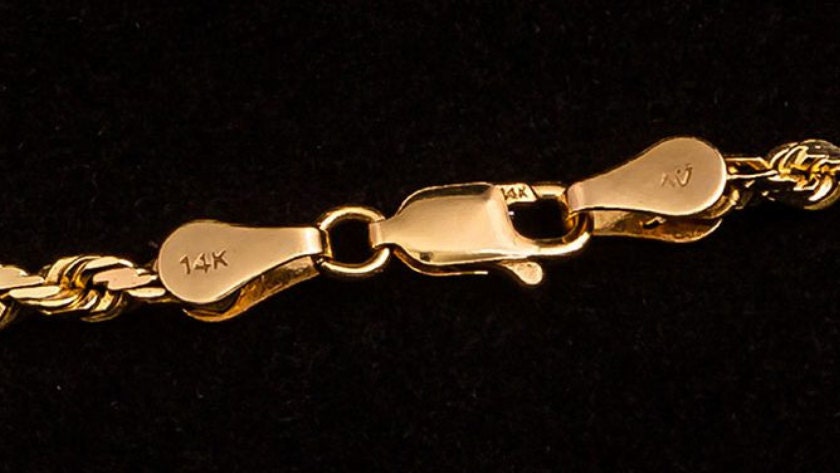Gold, which is among the most precious metals in the world, has a bright yellow structure. The metal, which is made of various ornaments by processing, has attracted the attention of all civilizations throughout history due to its resistance to acids, easy processing and being free in nature. Because it is a valuable element, imitations are often made. In fact, these fake golds are sometimes made so professionally that even jewelers can have a hard time distinguishing between real and fake gold.
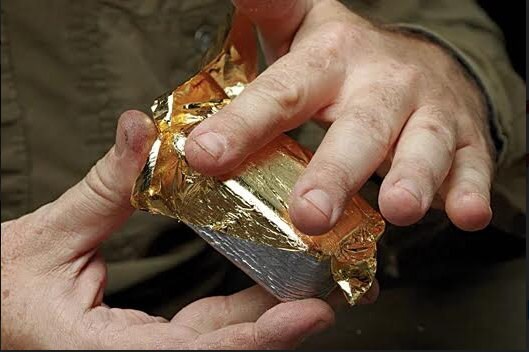
Fake Gold Bar
1.Examine the gold hallmarks on the surface carefully
The first thing you need to do to find out whether the gold is real is to look carefully at the product surface. You must pay attention to certain signs that indicate that the gold is real. You should look for an hallmark on the surface of the gold product, , indicating who the setting and manufacturer of the product is.
The hallmark indicates either the purity of the gold (1-999 or 0.1-0.999) or the carat value, i.e. its alloy setting (10K, 14K, 18K, 22K, 24K etc..). Using a magnifying glass will make this process easier. The points you will pay attention to in the observation test will be the abresing and erasing of the hallmark on the old gold. Counterfeit products can also often have hallmarks that look original. Look carefully for any noticeable discoloration. You should look for discoloration, especially in areas subject to constant friction (usually the edges). If the gold is corroded and metal is visible in the corroded areas, the piece in your hand is probably just plated with gold. You may need to do other tests to be sure whether the gold is fake or not.
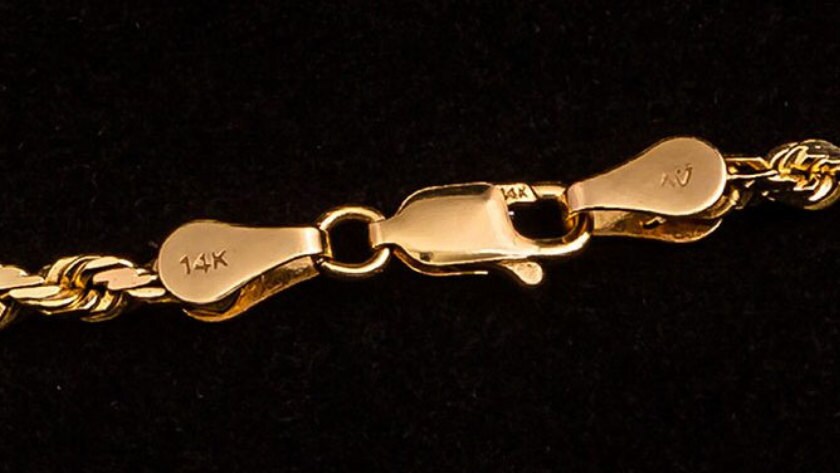
Hallmark of 14K Gold
2. Control method according to metal hardness by biting
We've all seen movies where a gold miner bites to test gold. Bite the gold of it with an average pressure and observe whether a scar is formed on it. In theory, a real gold product will leave a tooth mark, and the deeper the traces, the purer the gold. In other words, as the gold alloy setting gets smaller, the depth of trace that your teeth will leave will decrease. We don't really recommend this test because it could damage your teeth. Of course, you should also know that lead metal is softer than gold metal, and lead coated with gold will react like gold when you bite it
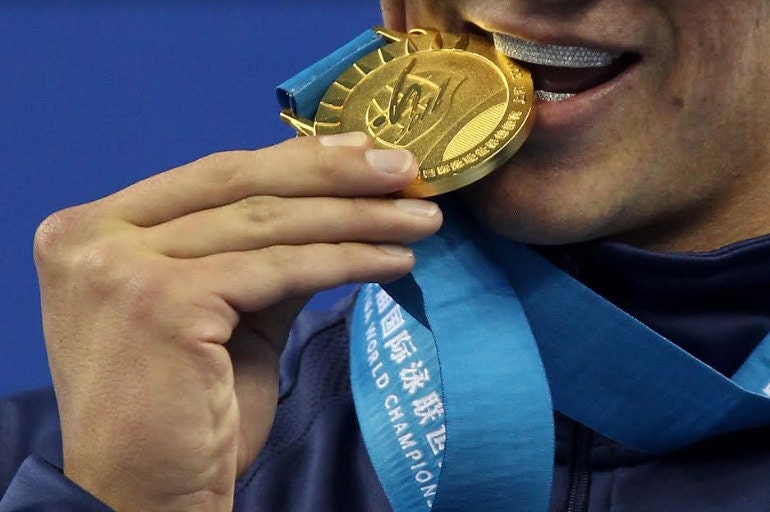
Biting the gold for testing its realness
3. Control method with via magnet
It's a very simple test. It is not a valid or one hundred percent decisive method in all cases to determine whether the gold product is genuine. A weak magnet, such as a fridge magnet, will not work. The healthiest magnets for you to do this test are the old-fashioned magnets. Move the magnet closer to the object. Since gold is not a magnetic metal, it will not react to the magnet's attraction. If the magnet attracts the object, you can tell it's fake gold. However, just because it does not respond to the magnet does not mean that the object is real gold, as there are also non-magnetic metals used in counterfeit jewelry.
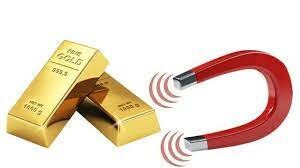
Magnet testing of reality of gold
4. Gold control method with density difference
There are very few types of metals that are denser than gold. Pure (24 carat) gold has a density, or specific mass, of 19.3 g/ml, which is very high compared to that of many other metals. Measuring the density of gold objects can help you determine if the gold is real. As a rule of thumb, the higher the density, the purer the gold. No precious stones or coatings such as enamel should be processed on the surface of the gold product you are testing for density. We recommend that you read the following warnings for important information about density testing.
Weigh the piece of gold. If you don't have your own scale, you can get precision scale help from a jeweler. Fill a small bottle with water. It will be better if there are milliliter markings on the side of the bottle because it will make it easier for you to read the measurements for testing. It doesn't matter how much water you use as long as you don't fill the bottle to the brim because when you put gold product in it, the water level will rise. It is very important that you note exactly the level of the water before and after you put gold in it.
Put the bottom in the bottle and note the newly formed water level and calculate the difference between the two values in milliliters.
You can calculate density with the formula: Density (specific mass) = mass / volume displaced. If the result is close to 19 g/ml, the metal you have is gold or another material with a density similar to gold metal. For an example calculation, you can follow the calculation path below. Let's say the object made of gold metal weighs 38 grams and displaces 2 milliliters of water. Substituting them in the formula [mass (38 g)]/[volume displaced (2 ml)], the result is 19 g/ml, which is very close to the density of gold.
Keep in mind that the g/ml ratio of gold alloys of different purity will vary.
• 14k yellow gold – 12.9 to 13.6 g/ml
• 14k white gold – 12.6 to 14.6 g/ml (higher for palladium alloys)
• 18k yellow gold – 15.2 to 15.9 g/ml
• 18k white gold – 14.7 to 16.9 g/ml
• 22 carat gold – 17.7 to 17.8 g/ml
5.Rubbing Gold on Ceramic Objects:
This is an easy way to tell if the gold is fake gold . Remember that the ceramic object you are testing can be scratched. Rub the gold product against a ceramic object. If there is a trace of black and tones on the surface of the ceramic, the product is not gold. When gold products are rubbed on ceramics, they will leave a trace of their own color. The ceramic rubbing method can only detect the metal type of the product surface. For this reason, make sure to check whether the product surface is coated or not. We do not recommend this method as it will permanently damage your jewelry.
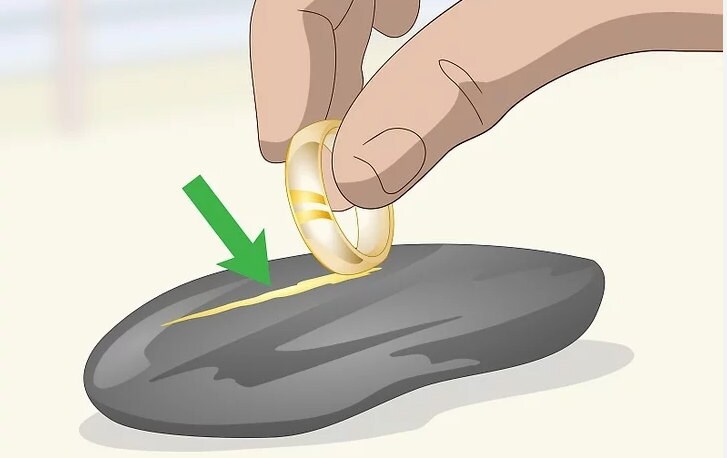
6. Gold makes a loud sound
Most jewelers recognize the gold metal from the sound it makes when it is released. Of course, this method is a test with experience. When gold metal is dropped on the ground or a hard surface from above, it makes a very loud sound. You can compare a product you are sure is gold with a product you suspect. Throw both products back to back on the hard floor and analyze whether the tone you hear is the same. The fake product will give a weaker ringing sound than the real product.
7. Method of pouring with nitric acid
That's where the term "acid test" comes from and is a great way to test gold metal. However, when the safety risks of doing it at home are added to the difficulty of obtaining the acid, it may be best to leave this test to a jeweler.Let's tell you how to do the test anyway. Put the product piece in a small stainless steel container. Drop a drop of nitric acid on the product and see if a reaction occurs in the acid. If the acid has turned green, the object is either a base metal or gold plated. If it turns golden, the object is a gold-plated brass alloy. If the acid turns milky, the object is silver plated with gold. If no reaction occurs, your object is probably real gold metal.
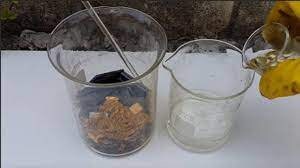
Determining whether it is gold via nitric acid

